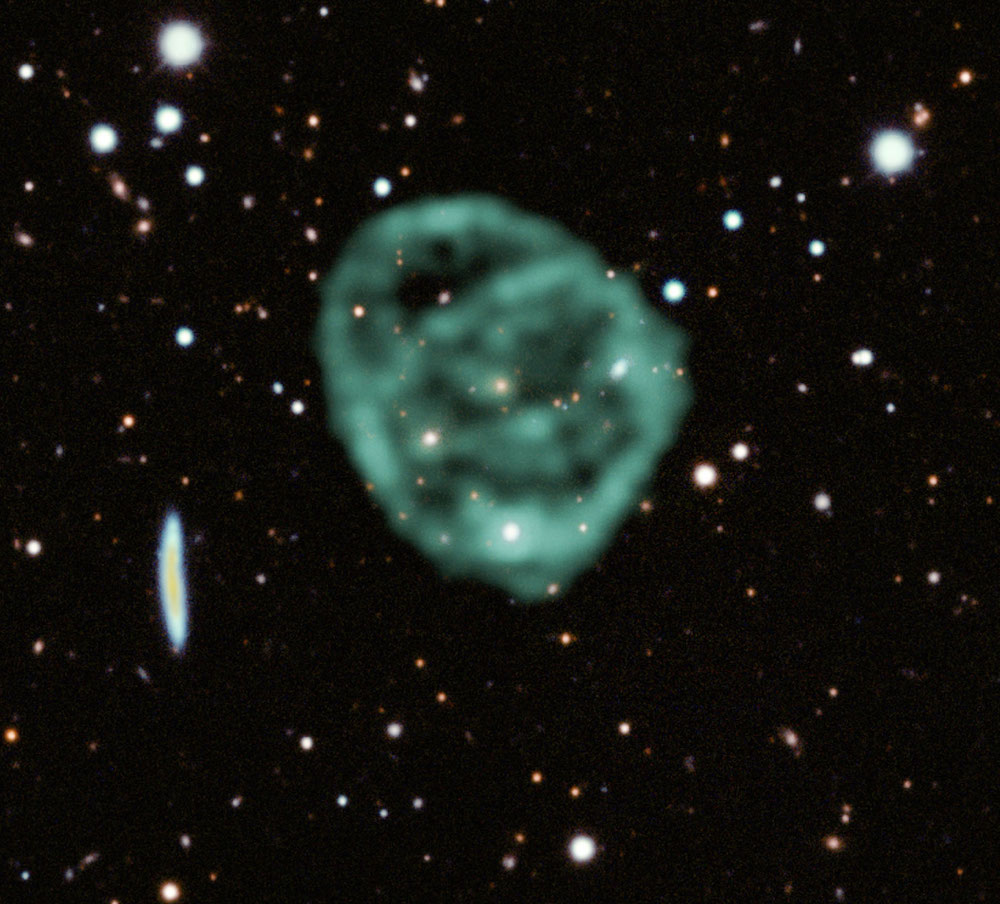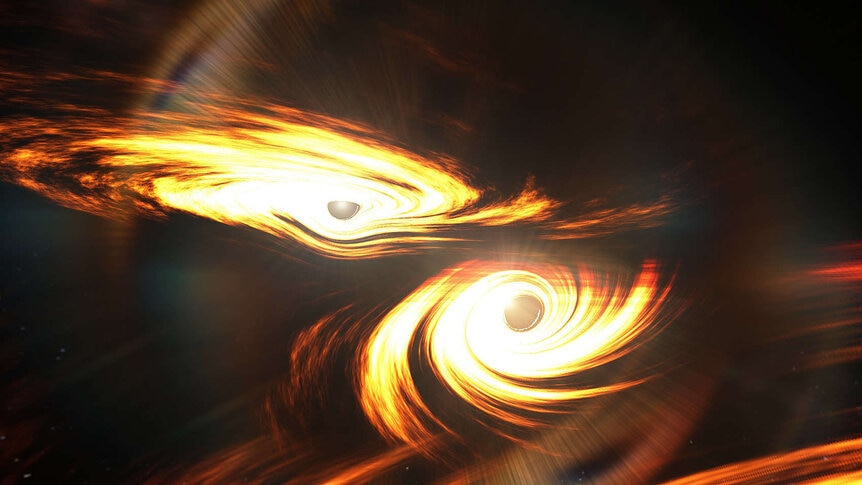Create a free profile to get unlimited access to exclusive videos, sweepstakes, and more!
Follow-up: ORCs are weird, huge, and still mysterious circles in space
Odd Radio Circles may be millions of light-years across.

ORCs! In! Spaaaaaace!
And by ORCs I mean Odd Radio Circles — yes, seriously, that’s what they’re called, and I love it — which are huge diffuse circular objects seen in radio waves. They were first discovered in 2020, and I wrote about them at the time. Four of them were detected in a pilot survey called Evolutionary Map of the Universe, or EMU, undertaken by the Australian Square-Kilometre Array Pathfinder telescope. They’re quite big on the sky, on the order of an arcminute across (where there are 60 arcminutes in a degree, and the Moon is 30 arcminutes across), and very faint, which is how they escaped detection until quite recently.
They’re almost certainly spherical in reality, but we see them as circles with brightish edges due to geometry. But either way they’re huge structures. Some of them appear to have nothing at their centers, making it difficult to understand what might have caused them. However, a couple have galaxies very close to the centers, and that’s pretty interesting. If they’re related to the galaxies, then “huge” severely undersells their size: They’d be a million light-years across. A million. Our entire galaxy is 120,000 light-years wide, for comparison.
Confusing the issue is that they appear to only be emitting radio waves, and no visible light that can be detected at all.
What sort of cosmic event from a galaxy could create such a colossal thing? What the heck are these things?
New research just published [link to paper] took a closer look at the first one ever seen, called ORC1. They used the MeerKAT telescope, an array of 64 connected radio dishes in South Africa, which is both more sensitive and has higher resolution (think of it as sharper eyesight) than the original observatory used to discover the ORCs. ORC1 is interesting even among ORCs for a couple of reasons. One is that it has a galaxy at its center, which is roughly 5.5 billion light years from Earth. The galaxy appears to be an elliptical, and if it’s the source of ORC1 than the structure is well over 2 million light years across. Enormous.
Also, ORC1 is in a region that has more galaxies than average. They find eight galaxies inside the circle that are about the same distance as the one in the center, indicating they might be related, perhaps forming a small group. If so, they are physically inside the ORC. If it’s some sort of expanding gas then it swept past them long ago, yet retained its overall shape.
The galaxy itself may have clues to the ORC’s origin. The colors of the stars indicate, like most elliptical galaxies, that it’s not making stars now, but it did undergo a burst of star formation several billion years ago. Sometimes, when many stars are born all at the same time, a huge wind of subatomic particles is blown out by the most massive stars… the same stars that explode a million or so years later, adding more gas and energy to the expanding wind. This material can expand beyond the originating galaxy, then ram through the thin stuff between galaxies, eventually slowing and piling up into a spherical shell. However, it’s unclear if this central galaxy had a big enough starburst to create the ORC.
Another cataclysm that might create such an immense structure is the merger of two supermassive black holes. Every big galaxy has one, and if two galaxies collide, then some time later their black holes may collide as well. The energy released when this happens is mind-stomping, for a brief time emitting as much energy as all the stars in the entire Universe combined. This energy is sent out as gravitational waves, which don’t interact well with matter, but black holes like these are commonly surrounded by huge disks of matter, and those can collide and get very bright. Very bright.
Another possibility is also related to supermassive black holes: They can power incredibly long and narrow beams of matter and energy called jets. We generally see these at an angle, so they look a bit like a Q-tip, but if one is aimed directly at us it could look like a giant circle in the sky. Usually in this geometry we see lots of X-rays and gamma rays from jets, but if the black hole shut the jet off long ago it could subside, and stop emitting that form of high-energy light.
So which is it? Yeah, well, that’s the thing: It’s not clear. All three of these ideas could potentially work but all three have problems creating an ORC of this size and energy as well.
Remember, though, that these ORCs were first seen just two years ago, are very hard to observe, and are without analogue on the sky. The fact that we know anything about them at all is remarkable. If they could be seen by, say James Webb Space Telescope, that would help a lot in understanding them; I’ll admit the odds of getting enough time on such a heavily subscribed observatory seems remote, though. Still, it’s early days with these weird objects.
But if I may misquote Legolas: “You must dig swift and deep, if ORCs wish to hide from astronomers.” We do have a tendency to not let go of a mystery once we sink our telescopes into one. And while we know of five such ORCs now, if ORC1 and its possible source galaxy can be studied better, then it may prove to be the one ring to bring them all, and in the darkness bind them.





























